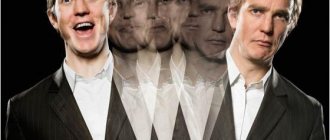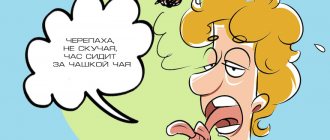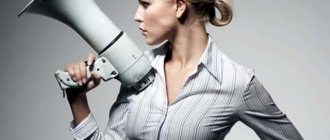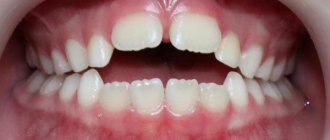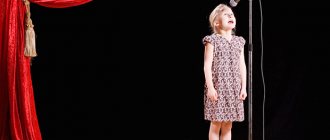The face, lips, tongue, pharynx, vocal cords are the main tools of a speaker. And just as athletes prepare their muscles before competitions or training, so do speakers train their articulatory apparatus.
Exercises help create the foundation necessary for a full-fledged voice , clear diction, and also relieve excessive tension in the articulatory and facial muscles. In addition, they teach the muscles the actions that are necessary for fluency and control of the articulatory apparatus.
This is also interesting:
- How to read eye expressions?
- How to prevent conflict at work?
- Recommendations from experts: How to cope with problems?
And if you don’t practice, your speech will not be as clear, clear, or sonorous. The speaker will get tired faster and put in more effort. Therefore, I advise you to remember the exercises before each performance, and ideally, do them every morning.
Know that such training also affects the tone and appearance of your face. You can also exercise in front of a mirror, so that when performing exercises, you can focus on visual indicators, and the most important thing is the feeling in the body. Remember them.
Avoid sudden movements and carefully do exactly what the exercise says. Do them at a moderate pace, effortlessly, smoothly and rhythmically. Don't chase quantity. Quality is more important.
You should maintain a state of inner peace in order to use only the necessary muscles. Lesson duration 5-7 minutes. If you wish, you can do it two or three times a day. If you do it at least once a day, you will already notice that the first results appear.
How to develop facial expressions
- Do facial expressions age you?
- Facial exercise
- Studying emotions
- Guessing game
- Learn to do what you don't know how to do
- Bad facial habits
Facial expressions are a powerful tool for expressing emotions and feelings, which can be more eloquent than any words.
It is not for nothing that there is a separate genre of theatrical art - pantomime. A mime can make audiences cry and laugh by acting out the performance with his face. Imagine how impoverished communication will be if you deprive it of additional ways of conveying your internal state - intonation, gestures and facial expressions. There are many professions for which the ability to control facial expressions is very important. This is both a vivid expression of emotions, and vice versa - the ability not to reveal one’s feelings. Actors, teachers, managers, diplomats, businessmen, TV presenters... But not only for work you need to know how to train facial expressions - everyone should be able to convey their feelings beautifully and reliably. In parallel with facial expressions, it is necessary to develop the speech apparatus - these two mechanisms are inextricably linked with each other. For example, there is a therapeutic complex of facial exercises for children with dysarthria - a disorder of pronunciation function. There is a “mutual guarantee” between speech and facial expressions: the clearer the speech, the better developed the facial muscles and vice versa.
But before we find out how to develop facial expressions, let's deal with an issue that worries many.
Inspiration
The issue of beautiful photographs is quite voluminous and complex. Try it, look for your own poses that will inspire you. When you are passionate, then you will definitely get great photos! If you want to take a photo as a couple, the pose option is here.
Have a nice day and suggest your options for win-win poses. I am especially interested in options with girls of non-standard appearance. Write your thoughts about this in the comments. See you soon in new interesting reviews.
Ivan was with you.
Do facial expressions age you?
There is an opinion that lively facial expressions quickly age a person: where folds often appear, deep wrinkles form over time. Is it so?
In order not to be unfounded, let's compare film actors known for their facial skills. Jim Carrey comes to mind first. He is in his early 50s and already has noticeable wrinkles, especially around the eyes. The actor himself admits that his career as an actor with the most expressive face gave him wrinkles. But at the same time, Kerry never had plastic surgery or Botox injections - since they make facial expressions more constrained, this is strictly contraindicated for a movie star. In order to slow down the aging process, Kerry uses creams.
Jackie Chan is another person with rich facial expressions who is always smiling. He is a little over 60 years old, but he looks great. Of course, he also has facial wrinkles, but throughout his life Jackie has only performed operations related to injuries - no plastic surgery.
The ever-present Johnny Depp is also slightly over 50, but it’s hard to believe - it seems that he is at most 40. But there is one secret - Captain Sparrow had plastic surgery: a facelift, eyebrow lifting and blepharoplasty (around the eyes).
But the actor famous for his almost complete lack of facial expressions - Keanu Reeves - does not age at all. He is the same age as Depp and Kerry, but at the same time he looks 30. They say that Neo does not disdain Botox, but the actor himself does not admit it. His main acting tool is his eyes.
Indeed, certain facial habits leave an imprint on the face - but this happens within the allotted time, when a person develops natural wrinkles, and not earlier. And what kind of wrinkles they will be is up to you to choose: either deep furrows from a gloomy frowning forehead, or charming rays around the eyes from laughter. And don’t forget that actors known for their ability to make faces have been doing this professionally all their lives. They filmed millions of takes and grimaced much more than a person would need in everyday life. Imagine Jim Carrey in his office. Did you laugh?
Those who are afraid of losing their youth need to remember additional factors - heredity, skin type, exposure to the sun, facial care. Massage, anti-aging treatments, creams and oils will help you not be afraid of the appearance of early wrinkles.
Tricks from fitness blogs
A few words about popular blocks with photos. For example, fitness models. Does everyone understand that these beautiful girls don’t look as perfect as in the photo?
It's not just about Photoshop, although the most illiterate people also turn to it. It's all about the pose, angle, lighting and so on. Tighten your stomach, wear pants with a higher waist, choose good lighting for yourself.
Anyone with a more or less standard figure can look like a blogger. In what ways?
Head
The head is slightly sideways to the photographer, the ideal angle is 45 degrees.
Lifehack to remove excess chins and emphasize your neck. We stretch our neck and slightly lower our chin. It is better to rehearse your smile in advance in the mirror. Such a slight half-smile, in the photo - example above, right image. Always looks great!
Due to the natural asymmetry of the face, it is better to turn around in the mirror in advance and choose a more attractive side.
Hands
Oddly placed hands can ruin any photo. How to put your hands?
- In your pockets. Remember that your elbows should be behind your body.
- Something to hold. Bag, coffee, accessory. And the second hand in your pocket or on your belt. Elbows behind the body!
- On the belt. But! First, elbows behind the body. And, secondly, one hand is on the belt, and the other is somehow different. Stretched out, with coffee... but not waist-length. The exception is photos for professional clothing models, but we’re all amateurs, aren’t we?
- One arm is bent below the chest, the other to the chin or extended.
- Hands together, as if we are about to clap our hands.
You could write a whole book on how to place your hands. But in general, you need to look at all your fantasies in the mirror, choose the ones you need and then listen to the experience and trained eye of the photographer.
Legs
The universal rule is that one leg is slightly bent and definitely not at the same level as the other. It is better if the legs do not overlap each other.
Let's leave complex figures to professional models! I recommend transferring your entire body weight to one leg, and to the one behind you. About standing poses you can read:
Facial exercise
In order to develop your facial expressions, you first need to make your face more mobile and loosen your facial muscles.
Athletes do a warm-up before training - let’s do this too. You need to stand in front of the mirror, put your hair in a ponytail, and pin up your bangs. The entire face should be visible. Start vigorously moving different parts of your face, trying to develop as much amplitude as possible. Here are examples of such movements:
- Raise and lower your eyebrows;
- Open and close your mouth wide;
- Smile as widely as possible without exposing your teeth, then sharply fold your lips into a bow or “duck”;
- Open your eyes wide and squint.
It is important that when exercising on a certain part of the face, the rest are not involved. At first, this can be difficult - some muscles “pull” others along with them, and together with your eyebrows, for example, you begin to reflexively raise your lips.
Movements
A good actor is now unthinkable without complete control of his body. Both in cinema and in the theater, he may have a role with difficult stunts and considerable physical activity. In addition to acting classes, body capabilities are also developed in stage movement classes. They include general warm-up and stretching of muscles, removal of tension and stiffness, acrobatics, balancing act, practicing stage combat, slapping, hitting, kissing and so on, part of the circus art. All these exercises begin with simple warm-ups and end with complex plastic performances, when actors express their thoughts without words, only with the help of plastic movements.
An exercise for a novice actor related to movement will in the future help him evoke the empathy of the audience, express thoughts and emotions in all available ways: not only with facial expressions and voice, but also with plasticity.
Studying emotions
As you remember, we will need the development of facial expressions primarily in order to colorfully convey emotions. Therefore, you need to learn the appropriate facial expression and learn to apply this skill in communication. Many people do not know how to convey emotions “to order”: you ask them to portray anger, but it turns out to be a comical mask. This is because they don’t know what they look like from the outside. We will eradicate this problem with the help of the following exercise.
Stand in front of the mirror and try to portray the following emotions:
If you are not satisfied with the result, look at the actors' faces in certain situations and try to imitate their expressions. If you can’t evaluate the results of your work in the mirror, take a selfie; it’s easier to draw objective conclusions from a photograph.
At sessions, the fashion model is obliged to depict all the feelings and states that the photographer gives her: “Give me some tenderness! Innocence! Aggression! You saw a kitten! They gave you a car!” And she must perform all this no worse than a Hollywood film star.
Many people think that models only need beauty and figure, but the ability to be photogenic and control your face plays a very important role in this profession. Try to be a fashion model and portray all the emotions and reactions that come to your mind.
Why is it important to know how to pose?
Many people refuse to take photos, arguing that they are “unphotogenic.” Do you know why this is a failed strategy? Because everyone has cameras today! Smartphones, tablets, even some watches.
You can always refuse, but with such a dominance of cameras, you can earn quite a bit of paranoia. And still get your pictures from time to time, for example, in a company.
It’s much calmer for the psyche to spend half an hour reading this material, rehearsing in the mirror and never again being afraid of turning out badly. There is no way to avoid photos. It's up to you to decide whether these will be good photos or a whole folder of horror stories for your grandchildren.
Bad facial habits
To have beautiful and expressive facial expressions, you need to get rid of habits that spoil your facial expression and cause early wrinkles. Many of us squint, wince, grimace and frown without even realizing how much it harms us. If you know such habits, control them. And in order not to relax, periodically squint or wince in the mirror - see how ugly it is, and you will immediately have an incentive to get rid of these grimaces. If you constantly forget about self-control, ask someone close to you to remind you. Mothers deal with this best - they are more concerned than anyone that their children be beautiful and charming.
*** Everyone has facial expressions - they are embedded in the brain in childhood, when babies look at their parents and copy their facial expressions. But uncontrolled facial expressions are like an ill-mannered person - they will always find where to make trouble. You can compare it to a horse riding a rider - instead of making life easier, uncontrolled facial expressions complicate it. They say about such people: everything is written on his forehead. And he would like to hide his feelings, but he cannot.
Its role should not be belittled - just the ability to correctly use facial expressions can significantly change a person’s fate. And you can start learning this skill at any time, regardless of age.
PS Find out “What is artistry and how to develop it”
If you find an error, please select a piece of text and press Ctrl+Enter.
Which side to turn
We will leave the frontal photo for important documents. Does everyone remember how “beautiful” we look in our passports? So let's not repeat this mistake in those photographs where we want to turn out beautiful.
Most of all, girls want to look natural, but fake photos turn out, at best, like those in a passport. We are not professional models.
Models used trial and error to find the ideal facial position in the photo. The head should be turned approximately 45 degrees towards the photographer. Something like this:
Of course, you don’t need to walk in front of the photographer with a protractor, but it won’t hurt to rehearse in front of the mirror. Or take a selfie.
I especially recommend taking selfies for guys, this will save them from looking in the mirror for a long time, and the resulting photos are easy to look at and analyze.
The same applies to the whole body. Yes, and it would be strange to stand directly in front of the photographer and look somewhere to the side. So the whole pose is not straight, but slightly turned to the side.
This, by the way, is a standard pose for photos on the red carpet. And if the most popular people in the world have been using this trick for decades, why shouldn't we?
How do emotions show on the face?
The psychology of human behavior is limitless. To fully study the secrets of facial expressions as one of its sections, it will take more than one year. Meanwhile, you can learn to understand your interlocutor by a glance or a hidden grin if you know about some nuances.
Firstly, the key to a correct understanding of what a person would like to say is an objective assessment of everything he reproduces, taking into account the relationship between speech and facial expressions. Secondly, people are able to express emotions that arise in the soul in two ways:
This means that if the partner wants not to reveal his true attitude to the information being communicated, he can limit himself to the simplest hint. But more often than not, this method is more misleading than effective.
How to determine the truth of information by facial expressions?
Before saying something, in most cases a person thinks about his words and tries to keep his facial expressions under control as much as possible. At the same time, it can be extremely difficult for the interlocutor to keep track of several reactions at once. Psychology will come to the rescue, teaching you how to properly develop the ability of facial “language” or identify a sincere attitude towards something by facial expressions.
Reactions that appear spontaneously or involuntarily in the interlocutor can be correctly read only if there is a long-term relationship with a partner. If you do not take this point into account, there will always be a possibility of critical self-deception in the process of deep recognition of your partner.
It is not difficult to determine the degree of personal expression from the facial expression of a human face, but it is extremely important to take into account many associated factors. It turns out that women have a much harder time managing their emotions than men. It is difficult for representatives of the fair sex to hide their existing experiences, so their face more clearly reveals its owner in a given situation. In addition to gender, other factors also play a role in the success of withholding information:
- temperament (it is easier for a phlegmatic person to protect his feelings from prying eyes than, for example, for a choleric person);
- additional related circumstances;
- experience of the receiving party.
Articulation
Exercises in acting and stage speech begin with the articulatory apparatus. These are our lips, jaw, tongue and everything that is involved in the process of forming the words that we speak out loud. If an actor has a sluggish articulatory apparatus, his words from the stage will not be understood by the audience, they will sound unclear. Therefore, the speech apparatus not only warms up before the performance, but also constantly develops and improves.
The warm-up always begins with the jaw, because how well the actor’s mouth opens determines what the message of what is being said will be.
How to learn to understand facial gestures?
Facial expression, as psychology says, is predetermined by the influence of experienced feelings, which provoke controlled contractions and relaxations of muscles. Many people want to master the ability to control their emotions by performing special facial exercises. However, all the measures taken to teach the subtleties of facial expressions will not be successful if you do not know about other important points.
For example, facial symmetry in displaying feelings helps to recognize a lie much faster. In addition, lips can give away a person’s desire to disguise.
For example, increased facial expressions in the mouth area allow us to conclude that the speaker is worried about something. Lips curved in one direction indicate a skeptical or mocking attitude towards what is happening.
Facial expressions in acting
Correct and beautiful facial expressions are especially important for an actor. A professional in this field, before going on stage, must perform his usual exercises aimed at warming up his facial muscles. The simplest and most common training scheme takes no more than 5 minutes, however, the results of its influence on a person’s facial abilities are colossal. To warm up, you need to follow the step-by-step instructions:
- In front of the mirror, concentrate your attention extremely on all the moving facial elements.
- Alternately (with eyebrows, eyes, cheeks, lips), do simple exercises with each part of the face, lowering and lifting up.
- A few minutes after completing a simple set of exercises, pay attention to the mobility of all facial muscles.
Training to improve facial expressions
An experienced actor often has no problems with mastering his own facial expressions. The psychology of facial communication he has learned and mastered allows him not to monitor the work of his muscles. His face in moments of anger, sadness or joy clearly conveys internal simulated experiences and emotional mood. But in order to correctly perceive acting on stage, you must first study your facial gestures in detail.
- Group classes on control and management of facial expressions are especially relevant in creative circles. The exercises performed by participants in such training are coordinated by the leader. He occupies a central place in the circle of students. Thus, the teacher is able to monitor the quality and compliance with the rules of each exercise performed.
- As students build a facial “picture” in a group, the leader must promptly orient each of them if corrections are necessary: some need to squint their eyes more to complete the image, while others need to relax the corners of their mouth and not frown. The psychology of facial expressions can be mastered much faster during a group discussion of each exercise.
Years of creativity and painstaking work on himself allow the actor to have no doubt about how his face looks at a particular moment. Without resorting to the help of a mirror, a person who has undergone long-term training in controlling personal facial expressions can portray this or that sensual mood.
Imagination
It is difficult to imagine an actor who does not have developed imagination and fantasy. After all, he constantly needs to believe in something that actually does not exist. Only the true faith of the actor himself, his complete immersion in the role and in the situation will make the viewer believe that this is Hamlet, and not a strange boy in funny pants; King Lear, not a grandfather who looks like Santa Claus, and so on.
There are no people who have no imagination at all. But there are people in whom it is poorly developed. To imagine the truth of a situation and yourself as the main character in it, imagination needs to be developed. First of all, this is done through observations, writing fairy tales, poems, stories, and reading good authors. Then work begins with acting sketches. A sketch is a small sketch in which the actor must act organically, which means he must believe.
We can say that the main exercise for a beginning actor is a sketch. It can be different: for an objectless action, in conditions of justified silence, with words and with objects, single and paired. The main thing is that the sketch has a plot and an event. At the same time, the actor must come up with a situation himself (or work in a given one) and behave in it naturally and organically, and for this he must believe that he, in the image of the hero, really found himself in such a situation.
Facial expressions in accordance with feelings
The psychology of facial expressions is understood in stages. To begin with, it is important to learn about how the appearance of a person experiencing different emotions changes:
- with joyful, inspiring feelings, the lips curl, their corners gravitate back, and fine wrinkles appear around the eye line;
- surprise or interest is shown on the face with raised eyebrows and slightly widened eyes, the mouth may be rounded and slightly open;
- disgust and contempt are reflected in a person’s appearance in different ways: in the first case, one can observe a wrinkled nose and drooping eyebrows, the lower lip is slightly protruded, giving the impression that the person has choked on something; in the second case, the interlocutor’s face will be elongated, eyebrows raised, and a “down” look is typical;
- It is easy to determine whether a person is scared or not by his widened eyes and eyebrows shifted inward; in addition, a slightly open mouth and pulled back corners indicate internal tension and stiffness;
- anger and anger manifest themselves in the same way: the forehead is furrowed, the eyes are threatening, the nostrils are widened, the lips are clenched, the skin may turn red;
- Feelings of shame are reflected in appearance by looking away, looking down, or shifting eyes, slightly closed eyelids.
Recommendations for performing facial exercises
It is important to perform exercises for the development of facial expressions regularly - only then the psychology of communication and facial expressions will become a faithful assistant. The duration of the workouts varies from person to person, but most often they are performed for 10 to 15 minutes a day. The set of classes can be divided into morning and evening sessions. In addition, there is no urgent need to carry out gymnastics strictly according to the schedule.
Any exercise aimed at mastering facial expressions should be performed in front of a mirror. It is extremely important to take the correct body position. It is most convenient to train your facial muscles while sitting, keeping your back and neck straight. It is worth considering that exercise is a considerable strain on the muscles and can negatively affect the elasticity of the skin in the future. Proper facial care and moisturizing will help prevent wrinkles.
"Talking" neck
It is believed that the jaw and tongue are involved in articulation, but it turns out that we often also strain the neck, as a result of which we provoke problems with the lower part of the jaw.
The fact is that the superficial muscles of the neck (platysma) are woven into the buccal region. Working during articulation not with the mouth, but with the platysma, we direct the tension vector downward - to the thoracic region.
Thus, we form the habit of lowering the corners of the mouth during a conversation, as a result of which marionette wrinkles form, and the skin of the neck takes on an uneven texture and becomes more flabby.
It’s easy to check how “talkative” your neck is. Place your palm on it and loudly, with expression, read the next few paragraphs or your favorite poem.
What do you feel? If the muscles are resting, great! Are you tense? Then it’s worth weaning them off this bad habit.
Deep myofascial massage will help to relax the neck muscles, which affects the fascia - the sheath of connective tissue surrounding the muscles. And in order to learn not to turn them on during a conversation, it is better to contact a speech therapist or speech technique specialist.
Exercises for beautiful and controlled facial expressions
The development of facial expressions occurs rapidly: after a couple of weeks of classes, with a diligent and persistent approach to learning, the changes will become noticeable and tangible not only to the student, but also to members of his social circle. Simple exercises look like this:
- Lips should be closed, but not squeezed. The entire muscular system of the face should be as relaxed as possible. Place your middle fingers at the corners of your mouth and press a little. The main task of this exercise is to stretch your lips “into a tube” and try to kiss the air. The nasolabial triangle should be tense for at least 10 seconds, then relax the muscles and repeat 5-6 times.
- With your mouth wide open, you need to raise your eyes up and blink constantly for 30–40 seconds. This exercise will not only tone your facial muscles, but also give your eyes a rest.
- You should clasp your cheeks with your hands so that your little fingers are in the corners of your lips. You need to make a wide smile without opening your mouth, and maintain it for some time (10–15 seconds). Gradually, returning to the starting position, relax for 10 seconds and repeat the exercise 5-6 times.
Mastering a perfect level of facial expression control is much easier than it might seem at first glance. The psychology of facial expressions will teach you to manage your emotions and determine the degree of their truthfulness in your interlocutor. ' alt=»»>
Sources:
https://constructorus.ru/samorazvitie/kak-razvit-mimiku-lica.html https://say-hi.me/bolshe/10-effektivnyx-uprazhnenij-dlya-uluchsheniya-mimiki-lica.html https:// yourspeech.ru/gesticulation/bodylangue/mimika-lica.html
